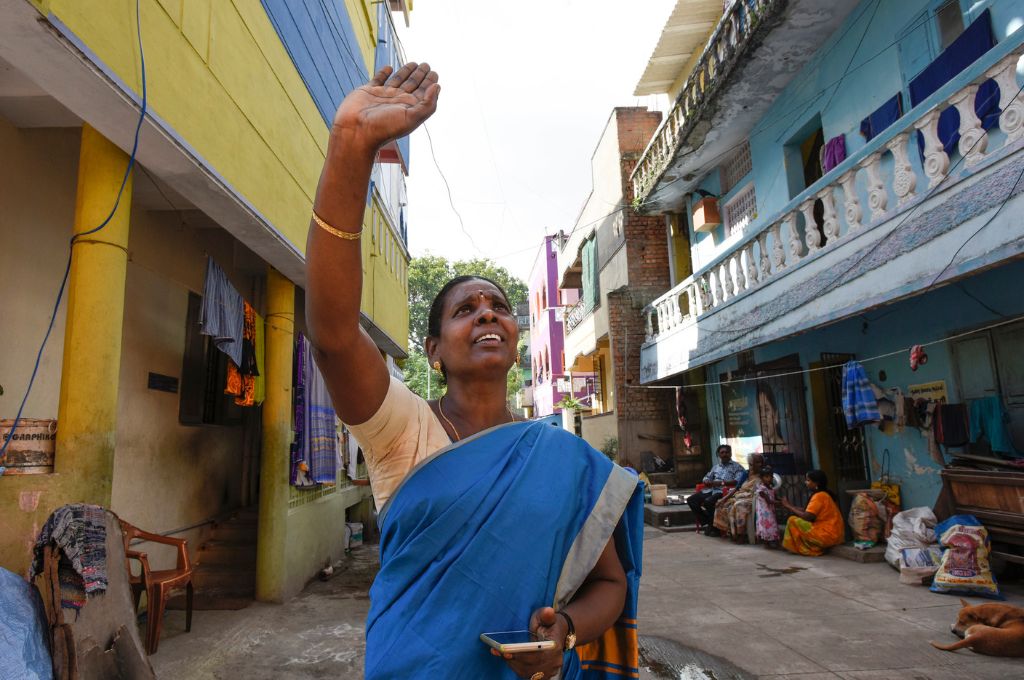While it is true that the health crisis caused by COVID-19 is not sparing anyone, it is also a fact that those living in urban informal settlements are at a heightened risk of being affected. Existing vulnerabilities, fragile living conditions, and the environments in which they pursue livelihoods exposes them by a greater degree to the infection.
Given this, the role of relevant and accurate communication in mitigating the threats posed by COVID-19 cannot be emphasised enough. As expressed in a February editorial in The Lancet, “There may be no way to prevent a COVID-19 pandemic in this globalised time, but verified information is the most effective prevention against the disease of panic.”
Aggravated by the widespread use of social media and digital communication channels like WhatsApp, it has become increasingly difficult for community members to separate fact from fiction.
The volume of information published and disseminated during the last six months has been extensive, and so has the amount of fake news and information that has been spread. Aggravated by the widespread use of social media and digital communication channels like WhatsApp, it has become increasingly difficult for community members to separate fact from fiction. Needless to say, during the course of the lockdown (and especially in the earlier phases of it), this led to rumours being spread, panic being created, and misinformation being shared widely amongst communities.
Related article: Engaging communities is critical to the COVID-19 response
In an effort to combat this, nonprofits like ours worked to create effective communication strategies for the communities we work with. As we enter into the post-lockdown phase of this disease, how can we use what we have learned to ensure that our messaging is targeted and impactful? Here are some ideas.
1. Develop a strategy that is bottom-up
Identify the needs and challenges of specific communities and develop tailored communication strategies based off of them. Rather than only disseminating generic information, it is important to understand the needs of the community at the field level and then create communication that is relevant and targeted to them.
To this end, at SNEHA, we conducted a community needs assessment survey to get a sense of our community’s understanding of the disease, their preventive behaviours, sources of information and information needs, trust in institutions, services available, and their attitudes towards the pandemic. Forty-three percent of the people surveyed said they wanted information about how they could protect their family’s health during the pandemic. This helped us create appropriate communication strategies for the community. Similarly, only 31 percent of the respondents said they regularly disinfect surfaces and items purchased from the market. We therefore incorporated cleaning and sanitising measures within our communication.
We also realised that using language that is understood by the community and breaking down complex scientific terms helps them follow safety measures and ask relevant questions. It can also avoid confusion and misunderstandings.
2. Use multiple channels of communication
Simple, clear, and concise information from reliable sources works best. While community members already receive a lot of information through the radio and television, nonprofits need to think about what mediums they have at their disposal. For example:
- WhatsApp can be used to effectively share news, updates, and any information that is constantly changing. In the last few months, we saw the use of WhatsApp groups become a high-impact tool.
- Visual elements such as wall art, short videos, and posters with illustrations are great for sharing best practices such as the benefits of keeping drums of water readily available outside the house to wash hands, the importance of wearing a mask at all times, or the trick of using elbows to open the door at a public toilet. This is a lot more effective than highlighting the same during a conversation.
- Community leaders and/or trusted community members can be deployed for regularly sharing reminders and consistent messaging around the disease and how to navigate it safely.
- Local cable channels have wide reach. According to the survey we conducted, 93 percent of people reported receiving their information from television while 55 percent said they received information through family or friends. Therefore we used local cable channels to deliver messages on COVID-19 prevention for better penetration. Nonprofits who wish to make use of this channel can get in touch with local cable operators—they are keen to broadcast information that is of value in the community.
Related article: Six things we learned from Dr Armida Fernandez
3. Involve the community
Identify proactive community members or influencers from within the community and involve them in the design of the communication strategy. This ensures that the messages being delivered are both, engaging and reach the intended audiences.
For example, when we realised that people in the communities where we work were gathering in groups and not adhering to physical distancing, we implemented a simple ‘Whistleblow campaign’. In accordance with it, community members would alert groups of people by blowing a whistle and calling the local patrolling police to diffuse the crowd immediately.
Additionally, involving community influencers such as local religious leaders and corporators, for the delivery of messaging can be an effective way to get buy-in from your target audience.
4. Create a feedback loop
A feedback loop allows a holistic and effective communication flow. It is significantly valuable at the community level where you have different sets of target audiences and need all of them to understand and implement the measures you are sharing.
Volunteers can communicate the community’s fears, questions, and practices to nonprofit teams.
To make this system effective, trained community volunteers can make the phone calls. They can be taught how to do so through online meetings and conference calls. If this method is followed they should also be provided with mobile phone recharge so that they can effectively work towards addressing emerging needs. These volunteers can then communicate the community’s fears, questions, practices, and so on, to nonprofit teams who can then use that information to tailor their communication in a timely and responsive manner.
5. Focus on busting myths
Busting myths related to the virus, quarantine facilities, isolation, and so on, is important. For us, a video testimonial of someone from the community who had recovered from COVID-19 was helpful in overcoming these fears.
Additionally, since uncertainties for the urban poor include the fear of losing their income and access to food, providing information about available programmes and support systems are also useful.
As the pandemic spreads, the need to provide clear information from a trusted source to people living in urban low-income communities has become a key factor in saving lives. Well-developed and clearly defined communication will determine and facilitate how these communities handle fear and uncertainty and help accomplish the necessary behaviour change required in the face of this crisis.
—
Know more
- Read UNHCR’s guide on how to effectively communicate with your target communities.
- Read WHO’s action plan on Risk Communication and Community Engagement for COVID-19 preparedness and response.
- Learn about SNEHA’s survey and what it found about their community’s need for COVID-19 information and knowledge.




